Barcelos is a small city located in the Braga district of Northern Portugal, it’s famous for the Rooster of Barcelos (O Galo de Barcelos) a national symbol of Portugal which takes the town’s name. It’s a vibrant place where history, legends, and religion all blend into a romantic riverside city.
Most of the town is on the north side of the River Cávado. Arriving from the south, you’ll cross the Ponte Medieval and be faced with the historic walls of Castelo de Barcelos, which really sets the scene to come! Within the city you’ll find lively squares buzzing with local life, historic monuments, famous markets and much more!
A Brief History of Barcelos
The origins of Barcelos date back to prehistoric times, with evidence of Carthaginian and Roman occupancy. The town survived through Visigoth and Moorish rule, before being firmly established with a Portuguese charter in the 12th Century by D. Afonso Henriques. The town rapidly grew during the 13th and 14th centuries and perhaps had its heyday during the 15th century with building of the Paço dos Condes de Barcelos, the Palace of the Counts of Barcelos. The palace itself would mostly be destroyed in the 1755 earthquake – but much of the towns medieval architecture still stands.

Barcelos a City of Crafts and Folk Arts
Today it’s small city by modern standards, yet proudly keeps its traditions. It’s part of the UNESCO Creative City network as a City of Crafts and Folk Arts. Clay and ceramic arts are a huge part of this region of Portugal. Although overshadowed by the Rooster of Barcelos, there’s a long tradition of colourfully painted figurines. These ceramic figurines display everything from rural life to religion and dipping into fantasy and mythology. Wondering around the town you’ll find some classic examples!
When to Visit Barcelos?
Every Thursday is the Feira de Barcelos quite literally the Barcelos’ Fair. It’s one of the oldest markets in Portugal. It’s origins actually date to the original ceramics workshops selling all manner of ceramic items, from wine amphorae to soup bowls. Although the modern version of the fair is a traditional Portuguese market, you’ll find a fresh farmers market, traditional food, as well as lots of the typical crafts and souvenirs. Of course, the Portugues rooster takes up a considerable amount of table space, but you’ll find traditional embroidered items like aprons, tablecloths, and towels too!

Understandably, if you can’t visit on a Thursday, you can still discover the medieval city and many of its attractions. Even if you’re specifically looking for ceramics and souvenirs, you’ll find most of the items that are available for sale at the market, can be found in several of the cities souvenir shops.
What to See and Do in Barcelos?
Barcelos is a somewhat small city, but there’s still plenty to do to fill a day of sightseeing. Combine it with some trips to the local area around the town to visit a winery and you’ve got several days’ worth of activities! Let’s start in the city though!
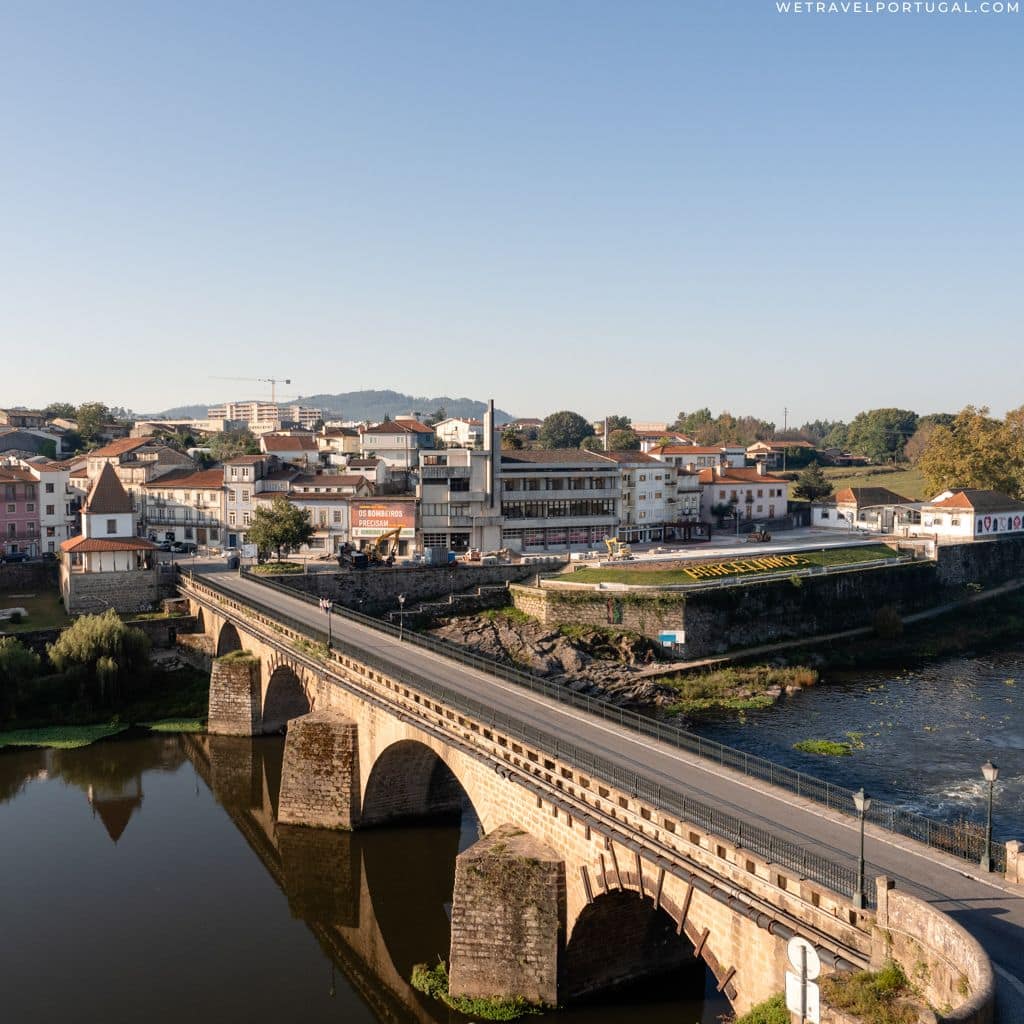
Ponte de Barcelos
One of the main focal points for anyone arriving from the south is the Ponte de Barcelos. Locally known as the Ponte Medieval it’s a grand entrance to this delightful area and really sets the scene for the historic section of the city. The five arched bridge across the Cávado River was built sometime around 1330 by Count Dom Pedro (a name you’ll soon be very familiar with). The 100m long granite bridge is a testament to the engineering capabilities of the era having survived the 1755 earthquake when many nearby structures didn’t.
The bridge is only just barely wide enough for two modern cars, so be careful if you wonder across it either direction. Similarly, if you drove here in a rental car, it can be a little nerve wracking to cross for the first time!
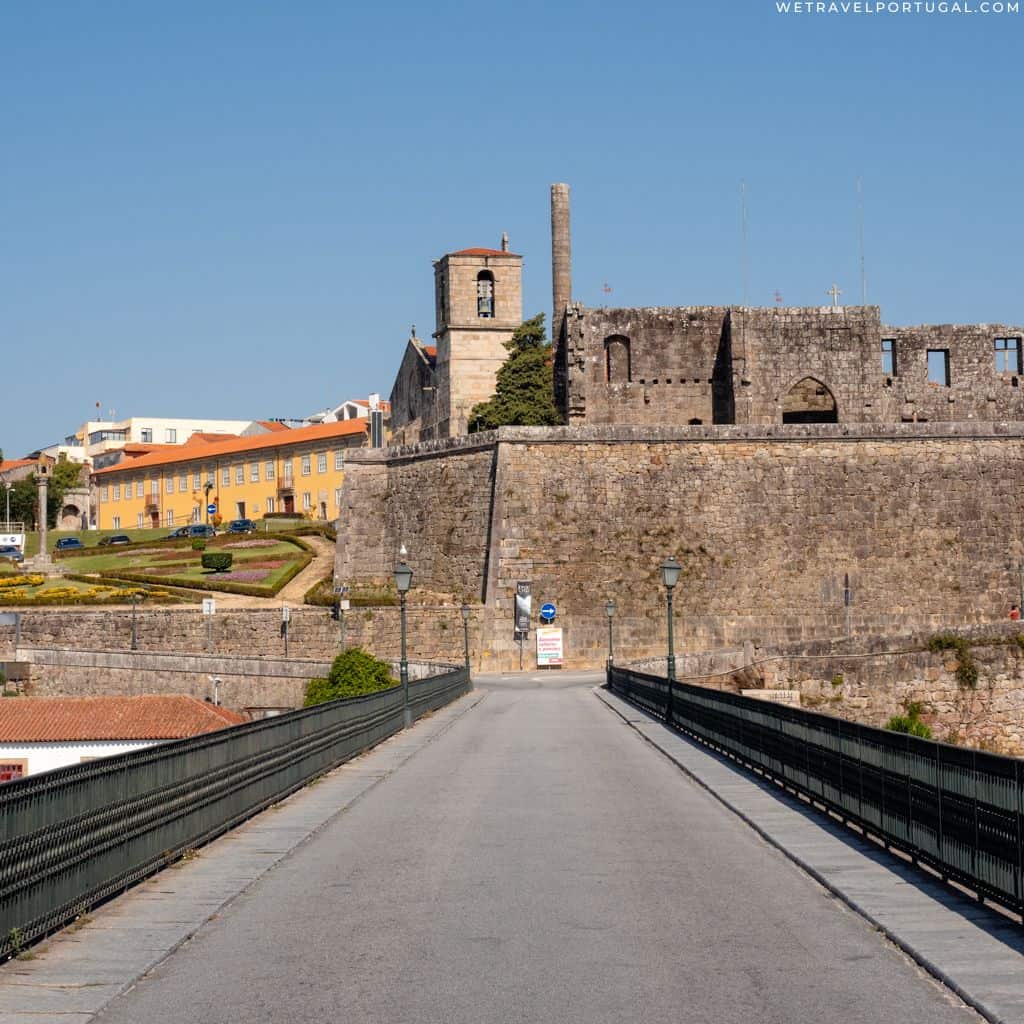
Castelo de Barcelos
Immediately up from the bridge is what is commonly called the Castelo de Barcelos. Except it’s not really a castle, its full name is the Paço dos Duques, or the Palace of the Counts of Barcelos. It was built by D. Afonso, the 8th Count of Barcelos and 1st Duke of Bragança in the 15th century. Although commonly called a castle, Paço dos Duques was a grand fortified palace sitting on top of considerable walls. It originally featured a gatehouse that led directly from and protected the medieval bridge.
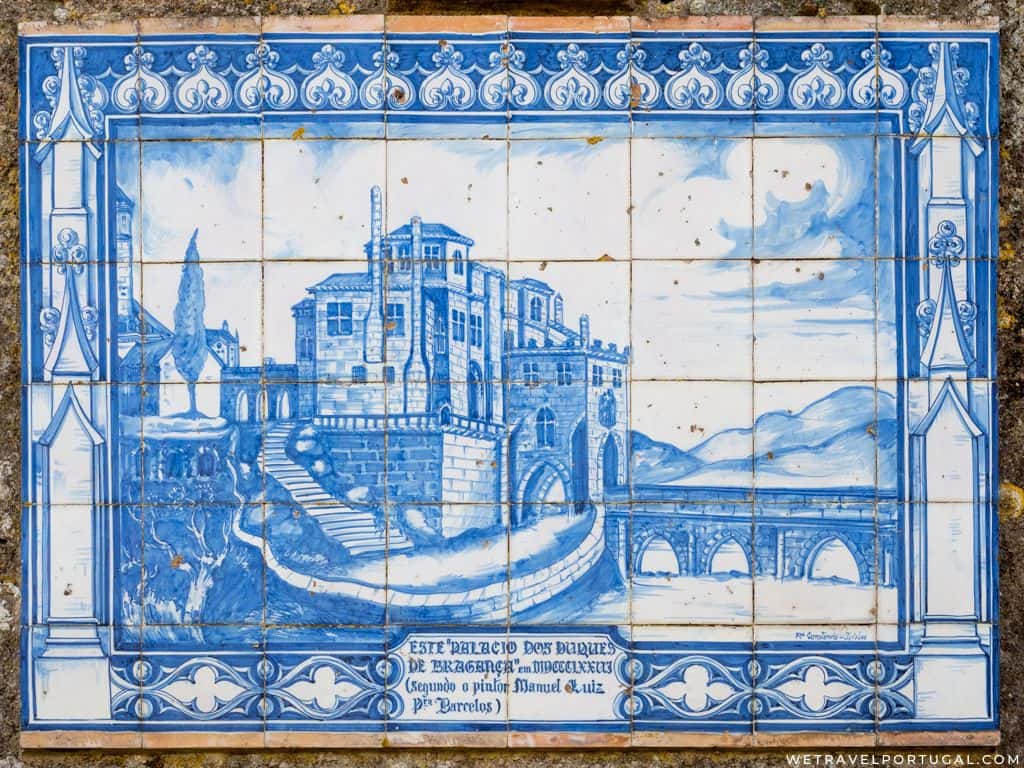
Museu Arqueológico – Paço dos Duques
What remains of the Paço dos Duques is now an archaeological museum. What’s left of the grand palace is not much more than several external walls and arched entrances. It’s still well worth a visit though, there’s some excellent azulejo tiles that show the original buildings as well as some very unique museum pieces. In the open-air museum, you’ll find Medieval sarcophagi, heraldic symbols from as far back as the 11th century, as well as various architectural elements from long dismantled churches and several stone carvings from noble houses that have now disappeared. As well as this, it also offers some of the best views of the medieval bridge, and several manicured gardens surrounding the historic palace.
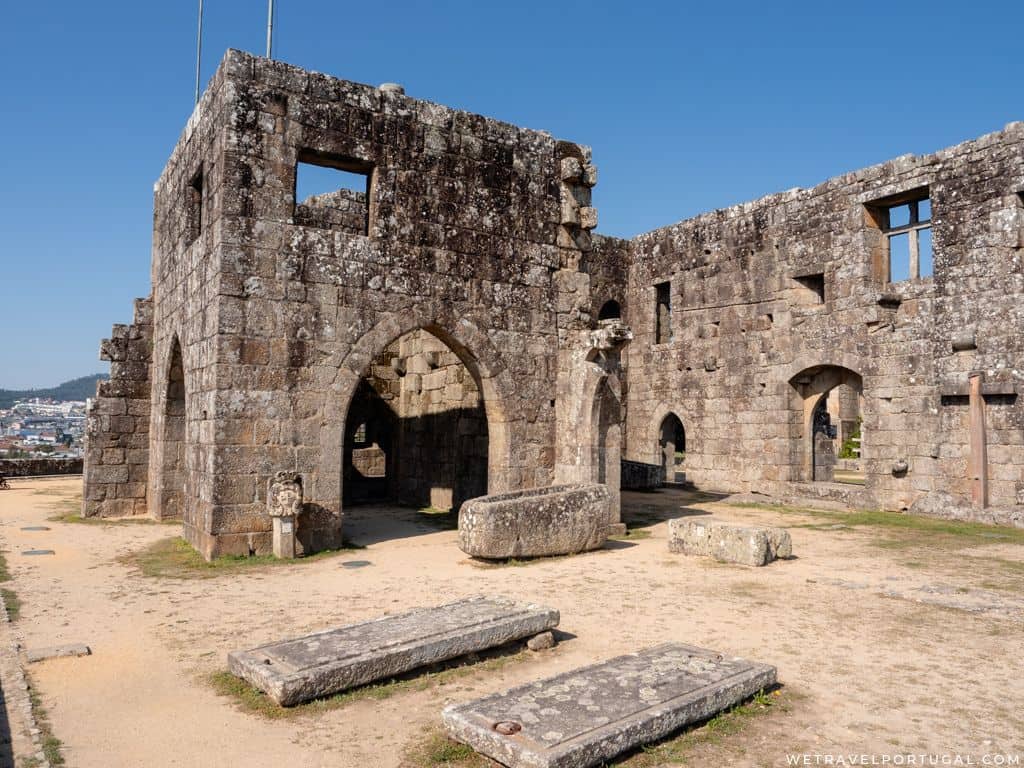
Igreja Matriz de Santa Maria Maior
Adjacent to the castle ruins is the main church of Barcelos – Igreja Matriz de Santa Maria Maior. The church we can see today was remodelled from a 13th Century Romanesque church. It was extensively remodelled in the gothic style around 1330 by Count Dom Pedro (yes the same person responsible for the bridge). Although the church was later redesigned and added to by Dom Afonso in the 15th century around the same time as the palace was constructed.
Sometime in the 18th century, the large bell tower was attached to the church, the granite stone was recovered from the collapsed palace. It’s a mix match of architectural styles from centuries of redevelopment, Inside, you’ll find the church and its walls adorned with traditional Azulejos tiles from the 18th century as well. It’s well worth stopping by as you explore this historic area of Barcelos.
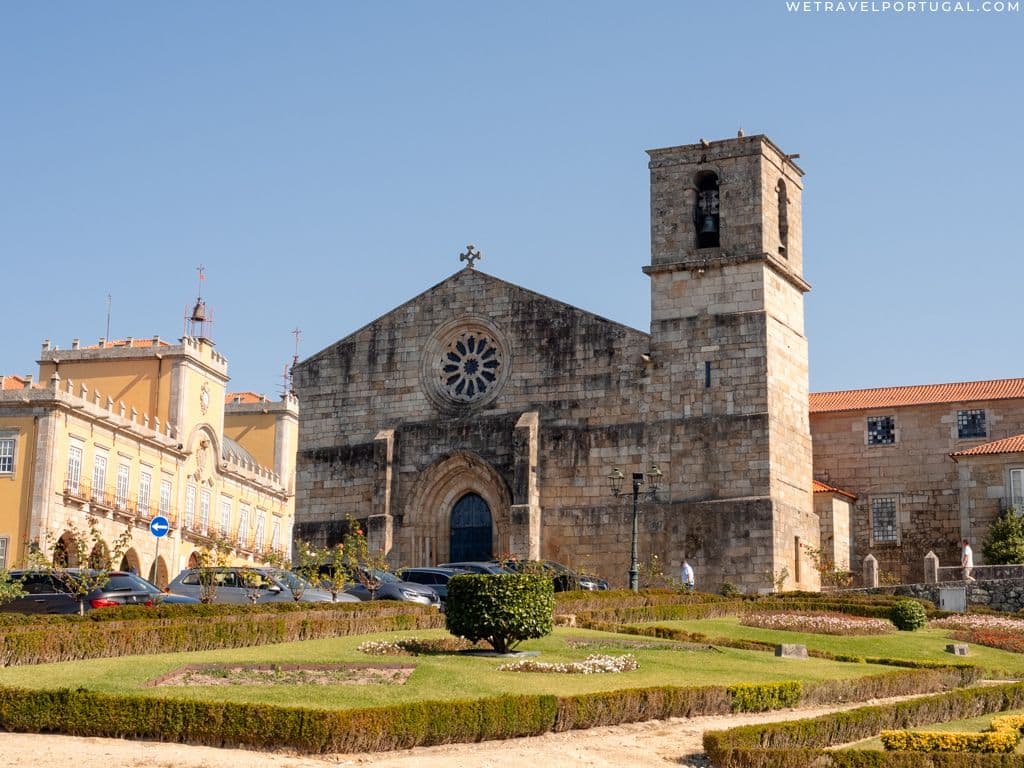
Largo do Apoio
From the church, we recommend heading north to Largo do Apoio, this route will take you past your first Galo de Barcelos, and the grand yellow Câmara Municipal de Barcelos (town hall). The short path will then take you to Largo do Apoio, one of Barcelo’s idyllic squares. This one is pretty small and based around a fountain, but on three of its fronts you have local coffee shops. A great place to stop for a refreshment before continuing to explore!
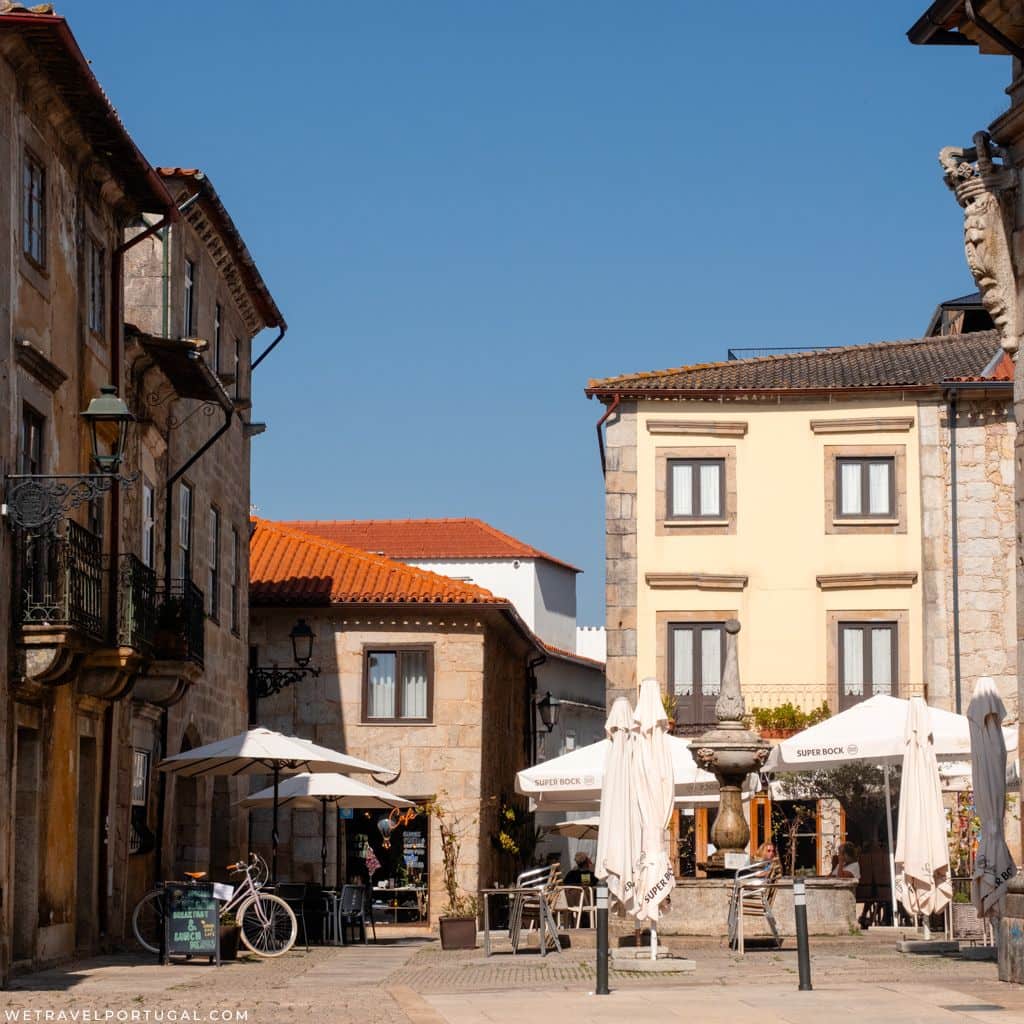
Chafariz do Largo da Porta Nova
From Largo do Apoio, you can take Rua Visconde Leiria in a western direction, this will take you towards a popular and pedestrianised shopping street – Rua Dom António Barroso. It’s lined with local cafes and boutiques. Follow the entire street and it will open up into Barcelos’ main square – Chafariz do Largo da Porta Nova. This is a much bigger and much more open plaza than the previous one and it’s surrounded by local focal points. It’s a lively square that feels like the heart of the city.

Medieval Tower of Barcelos
The first of those focal points and perhaps the most dramatic is the Torre Medieval. Its full name is the Torre do Cimo da Vila, but you’ll hear it be called the Torre de Barcelos, or Torre da Porta Nova. It was originally the keep of the town, and part of Barcelos’ original walls. There were originally three main towers that formed the main gateways to the town and its considerable defences. Today only the Torre da Porta Nova stands, and at 33m tall it dominates the ‘skyline’ of modern Barcelos.

On the ground floor you’ll find Barcelos Arts and Crafts Centre, a small exhibition dedicated to the traditional crafts of Barcelos. You can also purchase many of the local created items in their giftshop. The top floor has an accessible terrace with stunning views in all directions of Barcelos.
Templo do Senhor Bom Jesus da Cruz
On the opposite side of the square to the tower is The Templo do Senhor Bom Jesus da Cruz. It is a hexagonal Baroque style temple, with a plan cantered on a Greek cross covered by a dome. The origins of the temple are shrouded in local mythology. It’s said that in 1504 a black cross mysteriously appeared in an oak grove on Campo da Feira. The appearance of the cross was considered a divine manifestation, and a small square temple was built on the site to protect it.
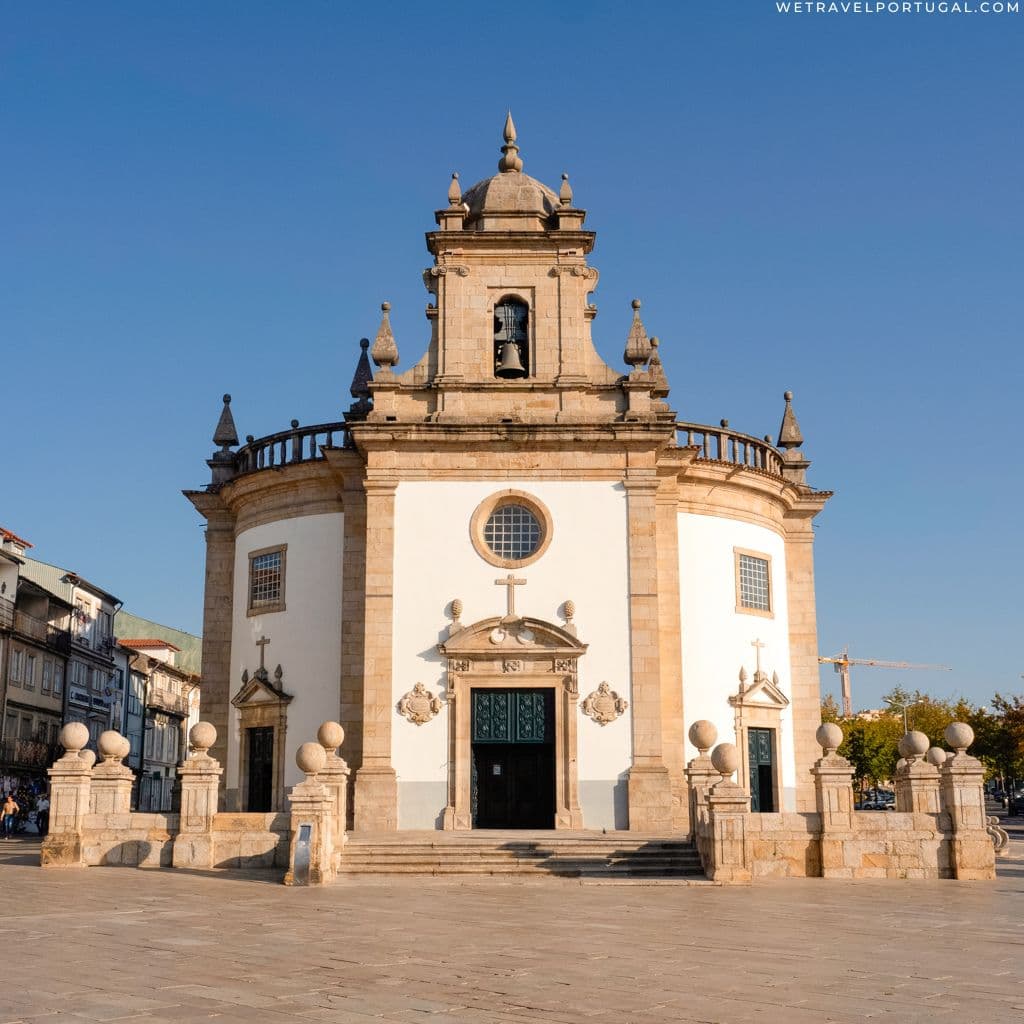
Nearly 200 years later, the Archbishop of Braga organised a competition to design a new grander temple to replace the original. The competition was won by an architect from Lisbon called João Antunes – who’s more famously known for the Church of Santa Engrácia in Lisbon. Inside, you’ll find a stunning Baroque interior filled with Azulejo tiles and gold gilded woodwork, and the original venerated wooden cross.
Jardim das Barrocas
To the south of Chafariz do Largo da Porta Nova, you’ll find a manicured garden with large white stone walls and archways. This is actually an 18th century Baroque urban garden that was designed to beautify the area leading to Campo da Feira. It’s an elegant part of the city, filled with flowers and benches. It’s a great place to stop and people watch that is less busy than the nearby plaza.
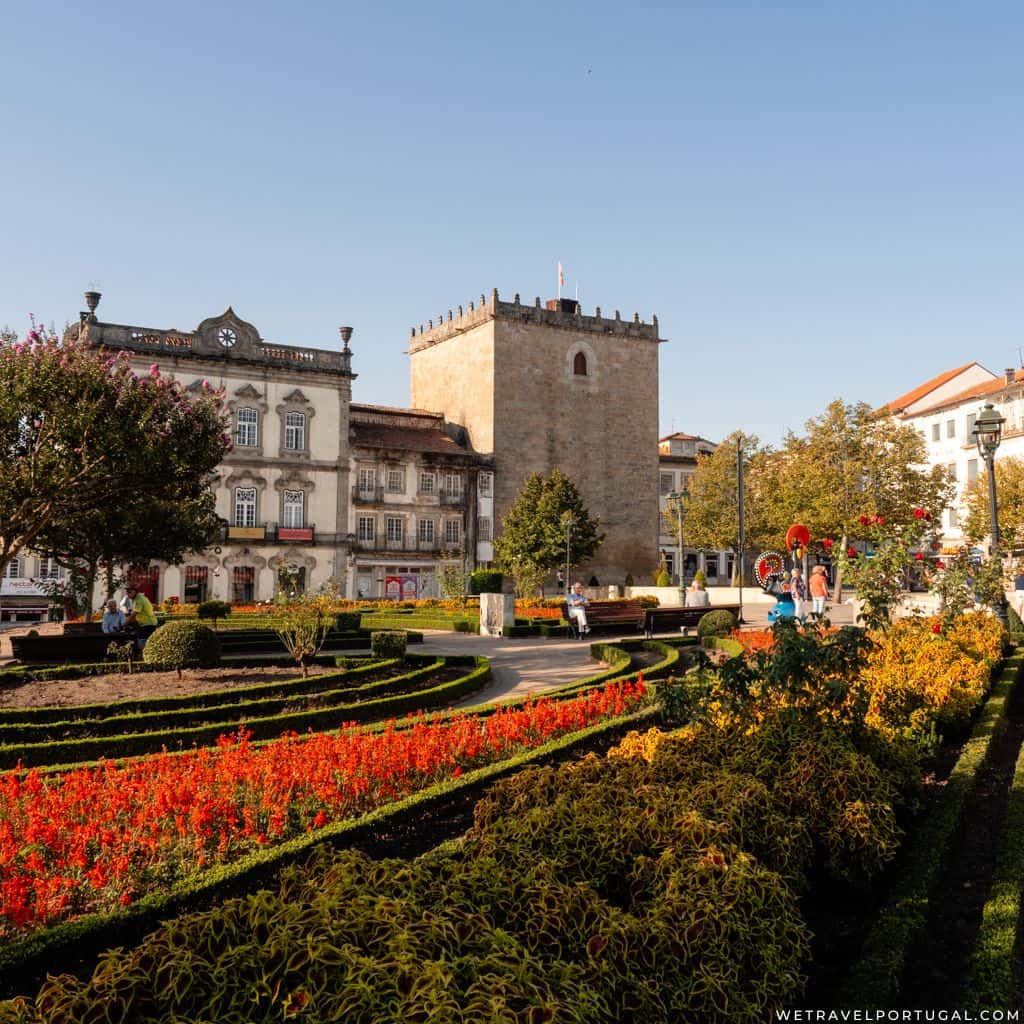
Campo da Feira – Barcelos Weekly Market
Outside of the rooster, Barcelos most famous aspect is its weekly Campo da Feira. It’s held in the huge open square that looks like a car park on any other day than a Thursday. It’s one of the largest and oldest running markets in Portugal, and confusingly titled Feira. Despite the name, this is not a fair in the traditional sense, you won’t find rides, but you will find endless market stalls. This is Portugal at its most hectic, loud, and perhaps traditional.
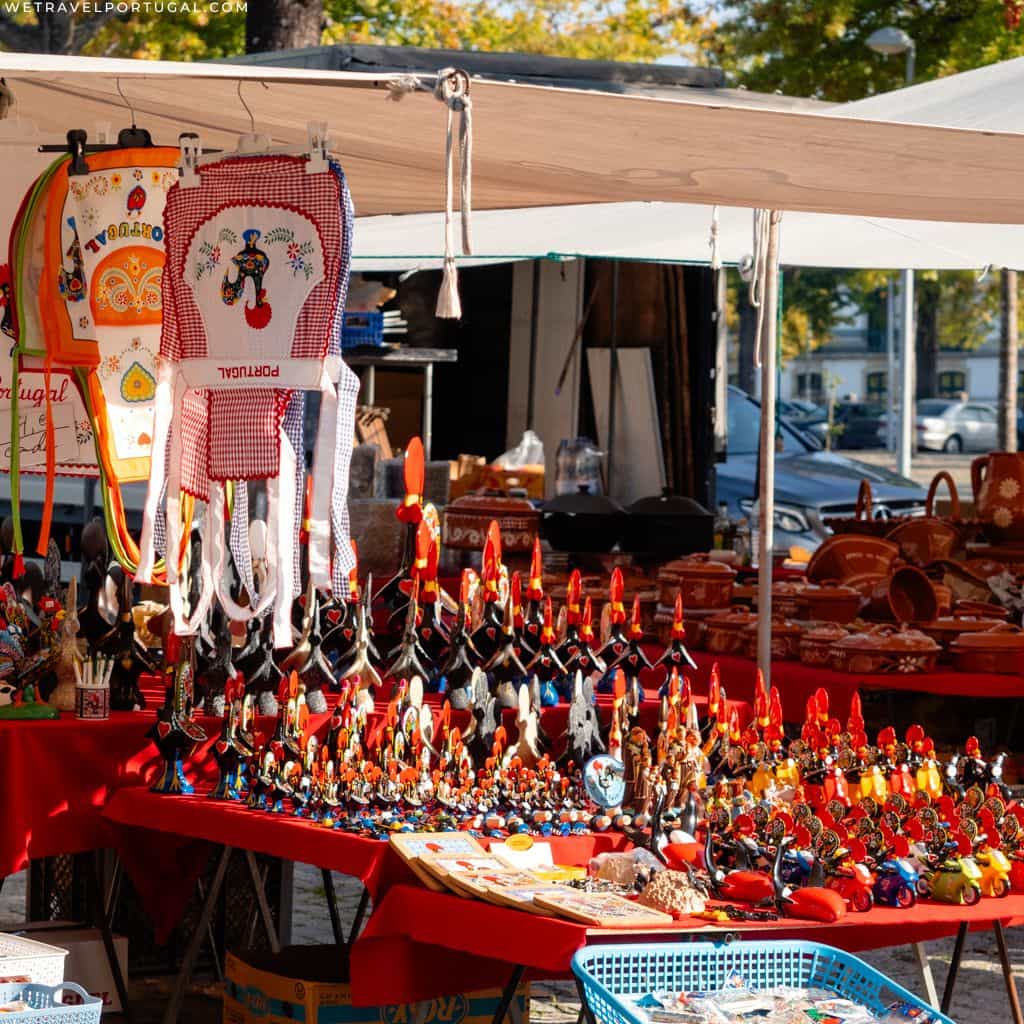
Among the market stalls you will find a vast array of both local and international products (more on that later), you may even find several tables of used, vintage or even antique goods. As well as multiple tables dedicated to traditional, and not so traditional ceramics. As well as this, you’ll find a section dedicated to the more typical farmers market, and also Portuguese food, sweets and regional delicacies. Even if you’re not looking for anything specifically it’s well worth wondering around if you’re visiting on Thursday!
Museum of Pottery – Museu de Olaria
As you’ve wondered around Barcelos you’ve probably now seen several large roosters, and maybe even other ceramic forms of people or mythological creatures. The Museum of Pottery is a fantastic place to learn about these and what they actually mean to the Portuguese Population. The museum actually surprised us, we expected it to be dedicated to the Rooster of Barcelos – especially as there’s even a giant one posted right outside the museum.
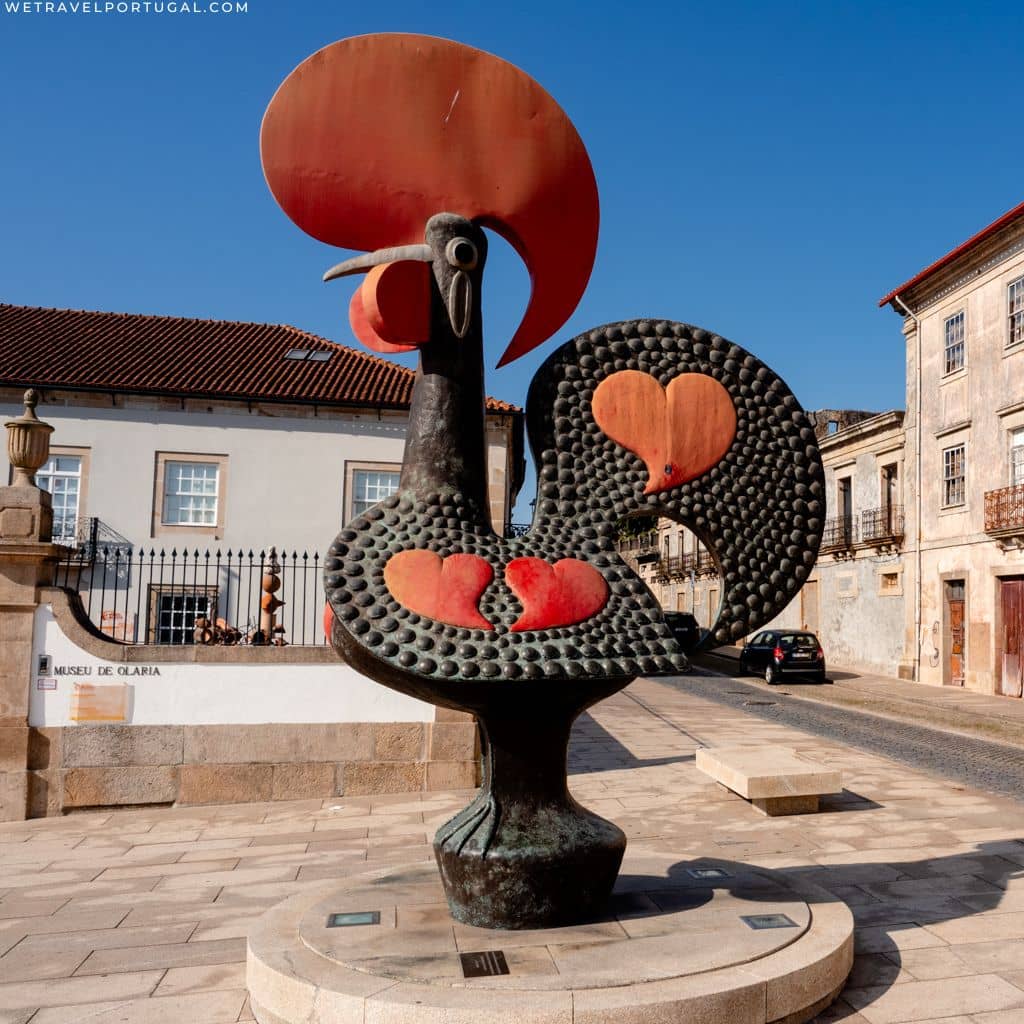
However, in Museu de Olaria you’ll learn that ceramics and pottery have a much deeper connection to Portugal than the rooster. Once inside you’ll find a bright open space over several floors dedicated to local and Portuguese ceramics, tracking both how to make them, traditional uses, as well as their evolution from agricultural and domestic uses to children’s toys and figurines. Eventually, detailing their downfall in the late 20th century, to their rise and recognition as a traditional artform worth protecting. It is one of our favourite museums in Portugal!
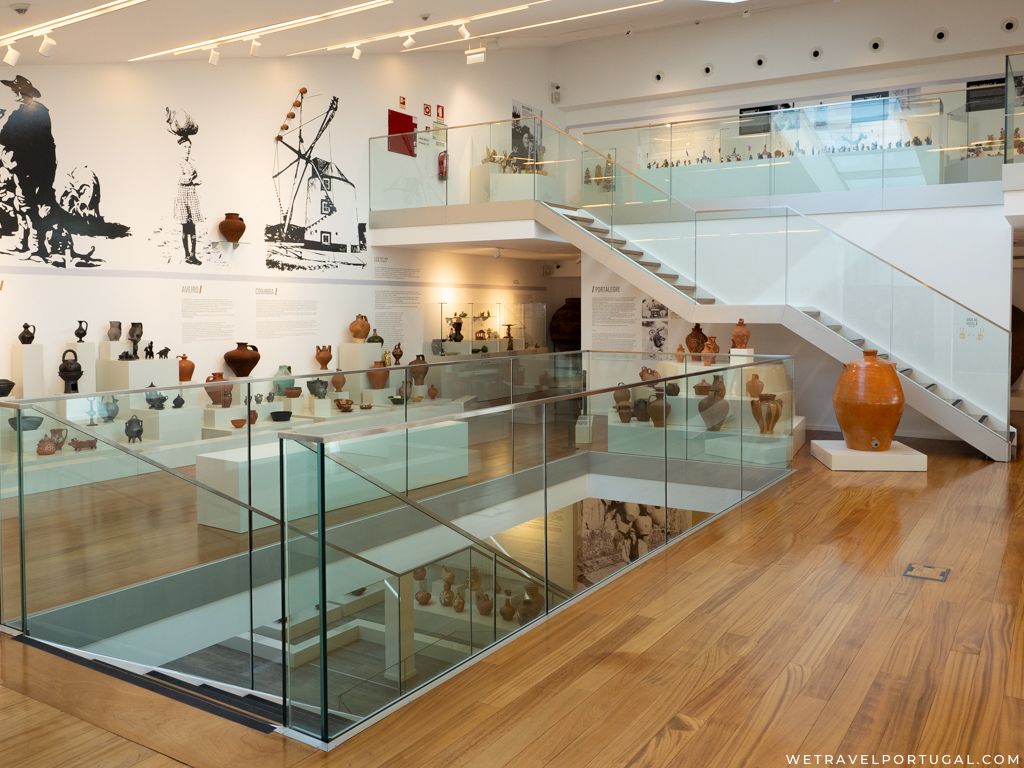
The Rooster of Barcelos – Galo de Barcelos
As you explore Barcelos, you’ll no doubt come across multiple variants of the Galo de Barcelos. What exactly is this colourful chicken, what’s it got to do with Barcelos, and how did it become the national symbol of Portugal?
It all comes from a famous legend – In the 16th century a Galician pilgrim on his way to Santiago de Compostela stopped for a night in the town of Barcelos. Being a stranger in the town, the pilgrim soon found himself convicted of a serious crime and sentenced to death. The crime in the story varies a lot depending on your sources, often it’s the theft of someone’s silver, but sometimes also a murder.
The pilgrim is sentenced to death and begs to be seen by the local judge. The pilgrim is brought before the judge who at the time was feasting and about to eat a large roasted cockerel. Protesting his innocence, the pilgrim declares: “if I am innocent, may the cockerel get up and crow”. Unfortunately for the pilgrim, the roasted chicken does not get up and crow, the judge ignores the plea and allows the execution to proceed.
Once the pilgrim is removed from judge’s presence, to be taken to the gallows, the judge once again focuses on the roast chicken in front of him. Just as he’s about to start eating, the rooster miraculously crows. The judge rushes to the gallows only to find the pilgrim has been saved by a poorly tied knot. The judge amazed at the circumstances allowed the pilgrim to go free. From that day, the cockerel would be the symbol of the town and would symbolise faith, justice, and good fortune.
Supposedly, several years later, the very same pilgrim returned to the town and carved the famous Cross of the Lord of the Cockerel (Cruzeiro do Senhor do Galo), which can still be seen today in the grounds of the archaeological museum.
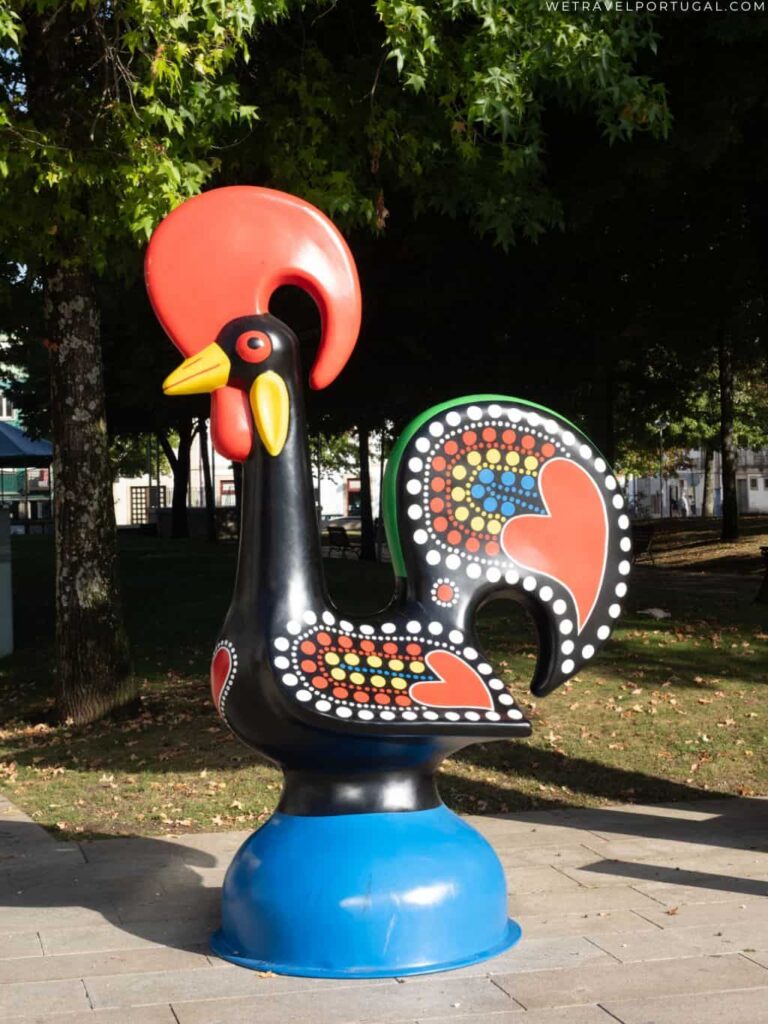
Praia Fluvial Barcelinhos – A Beach in Barcelos?
Although Barcelos is around 20-25 minutes from the nearest coastal beach, there’s actually a place you can experience both sand and water right in the city. Praia Fluvial Barcelinhos is a river beach that is accessible from the southern side of the town – Barcelinhos. You’ll need to head across the medieval bridge to find your way to the beach.
During the summer months the river beach is well maintained, offering sun beds, a picnic area, washrooms, and changing rooms. Although during the off-season it is typically closed for restoration and refurbishment. So if you’re visiting late or early in the year don’t expect to find too much but a large sandy river bank here!
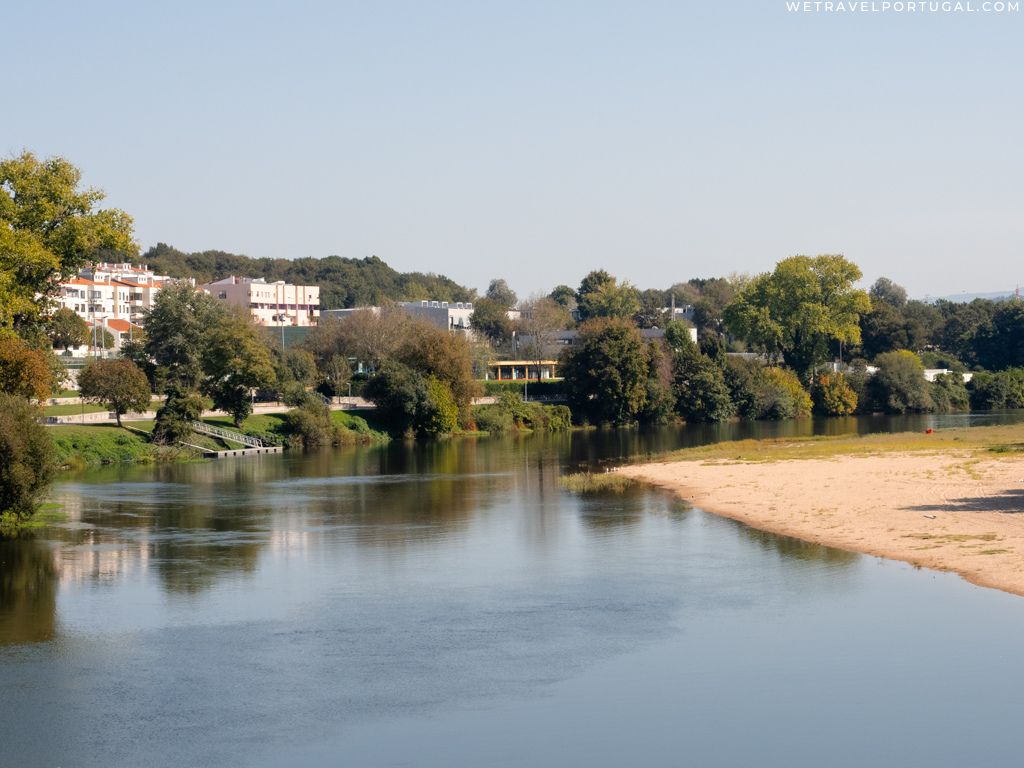
What To Eat in Barcelos – Typical food and Dishes
Despite the connection and symbology to the rooster, it’s also a typical dish and local favourite. The full dish is called Galo Assado à moda de Barcelos (Roasted Rooster in Barcelos Style). The Barcelos style involves local chouriço and the addition of Vinho Verde. Although not specific to Barcelos, but a very traditional dish for the Minho region is Papas de Sarrabulho. It’s a meaty porridge made of pigs’ blood, chicken meat, and pork sausage, often mixed with bread or corn flour. It’s a strong dish associated with cooler winter weather.
On the sweeter side of things, you’ll find local varieties of pastries like the Queijadinhas de Barcelos. It’s a local delicacy that made it into the final phase of the 7 Maravilhas Doces de Portugal (the seven wonders of Portuguese Sweets). It’s a delightfully light and small pastry served in a wafer dipped in sugar syrup and shaped into a five-pointed star. It’s a must try when stopping at any of the pastelarias for coffee!
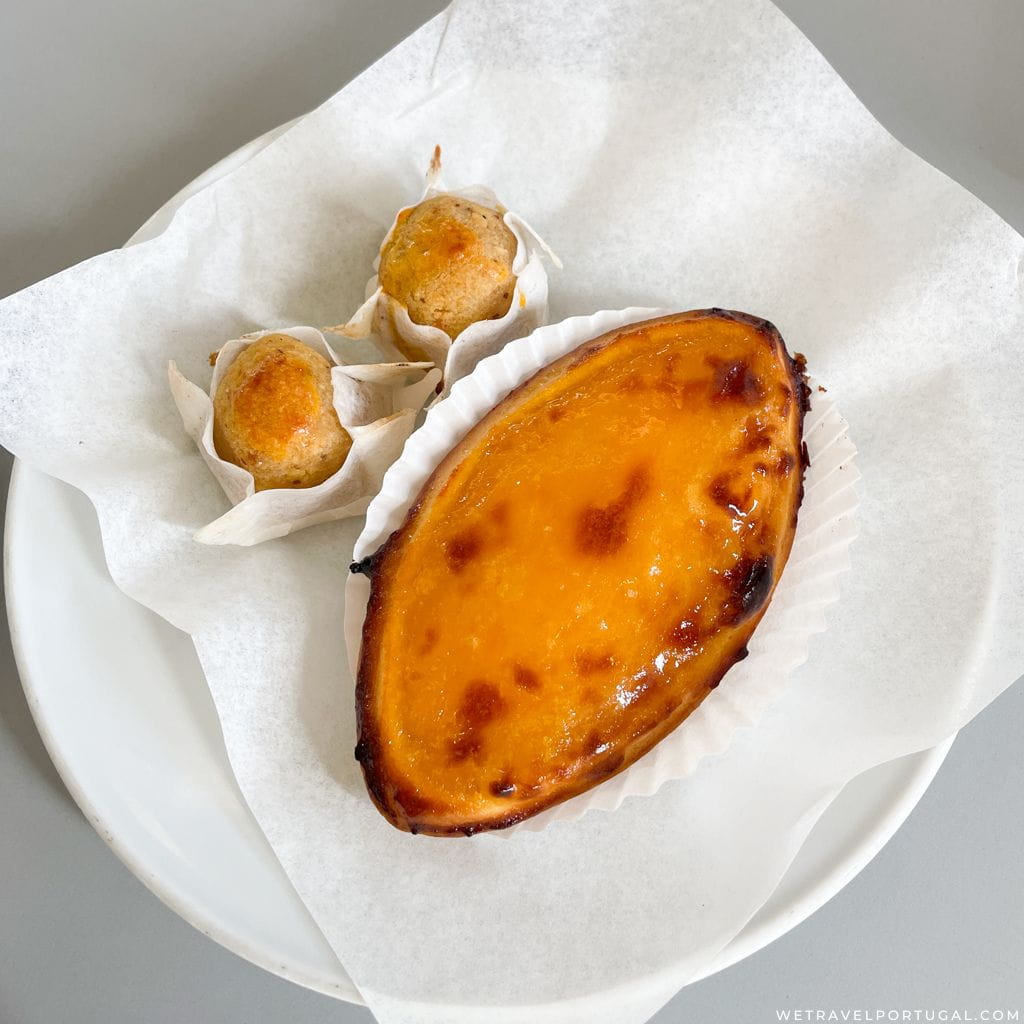
Somewhere to Stay in Barcelos?
Barcelos can be an easy day trip, however many of these northern towns and cities really start to breathe in the afternoons and evenings. Staying for a night allows you to immerse yourself in the lively restaurant scene, and maybe even catch a show at one of Barcelos live venues. The small city is not overly developed for tourists so you won’t find your major hotel chains, or giant luxury hotels here either. Here’s our picks:
Conveniently located walking distance from the main attractions is the wonderful Art’Otel Barcelos. It’s a small boutique hotel blending traditional design with contemporary art. For something more cosy, and a little more luxury than take a look at RioVerde Agroturismo. It’s a holiday home on a small farm offering a fully private stay. It also features a pool for cooling off! For a full list of accommodation available in Barcelos you can check here.
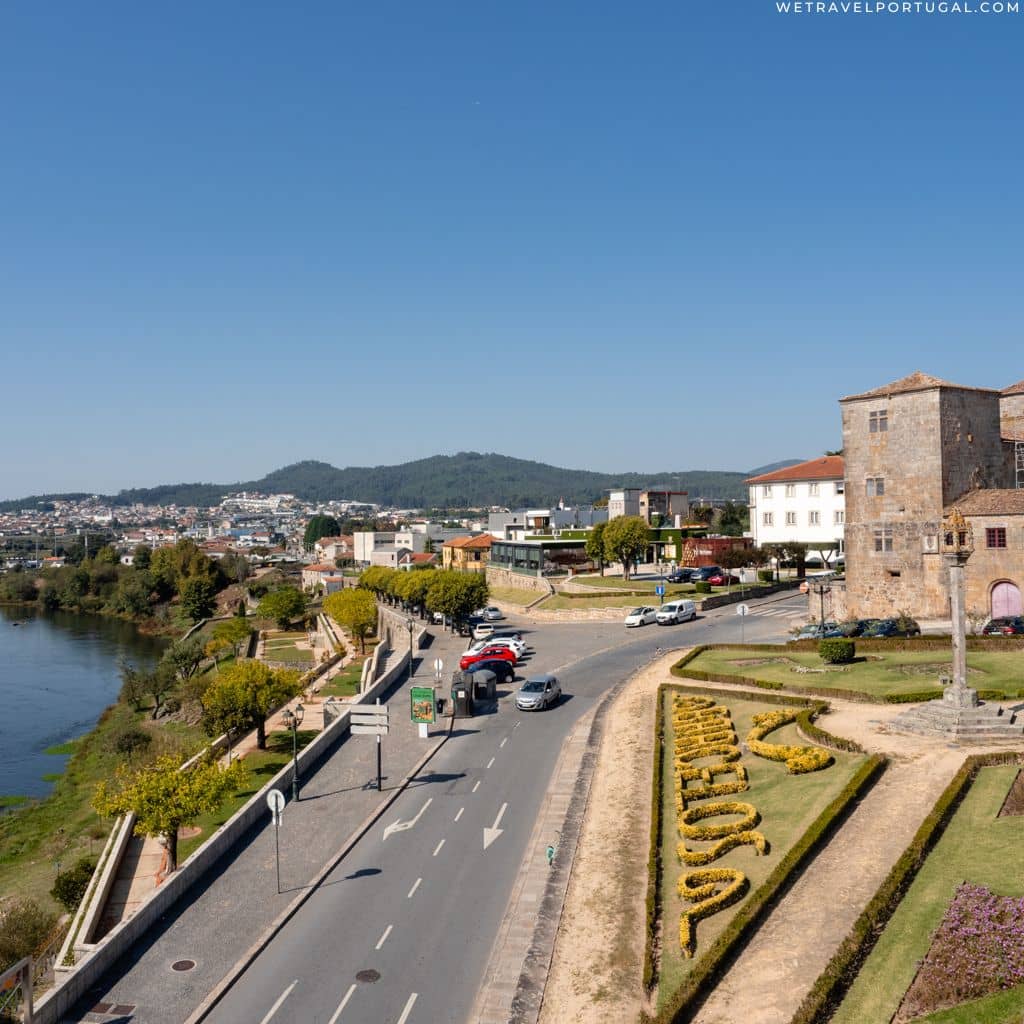
How to Get to Barcelos
Barcelos is located in the north of Portugal, around 50km north of Porto. The majority of the public transport connections will take you through Porto.
Driving – If you have a rental car or your own vehicle, then driving directly to Barcelos is a simple option. It will take around 50 minutes to drive from Porto, or around 3 and a half hours to drive from Lisbon. Don’t have a rental car yet? Then our guide covers everything you should know about renting one in Portugal!
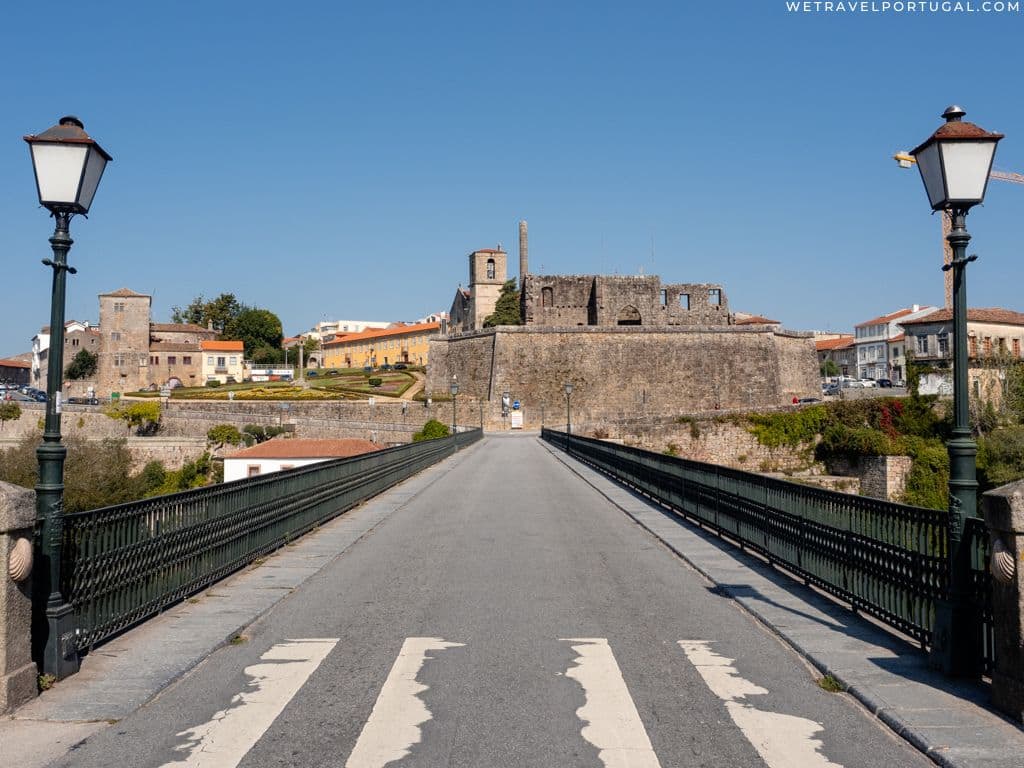
Public Transport – Trains and Buses
Barcelos has its own train station on the Linha do Minho trainline. Allowing you to catch multiple services from the likes of Coimbra (Coimbra B), Porto (São Bento and Campanha). The same trainline runs further north to Viana do Castelo and Valença. For the full timetables and for tickets book directly on the official website (Combois de Portugal).
Barcelos is also served by a large bus station, with multiple connections to the local and wider area. Rede Expressos also known as Renex operate the regional services. Services from Lisbon are available but they typically have transfers in Porto or Braga.
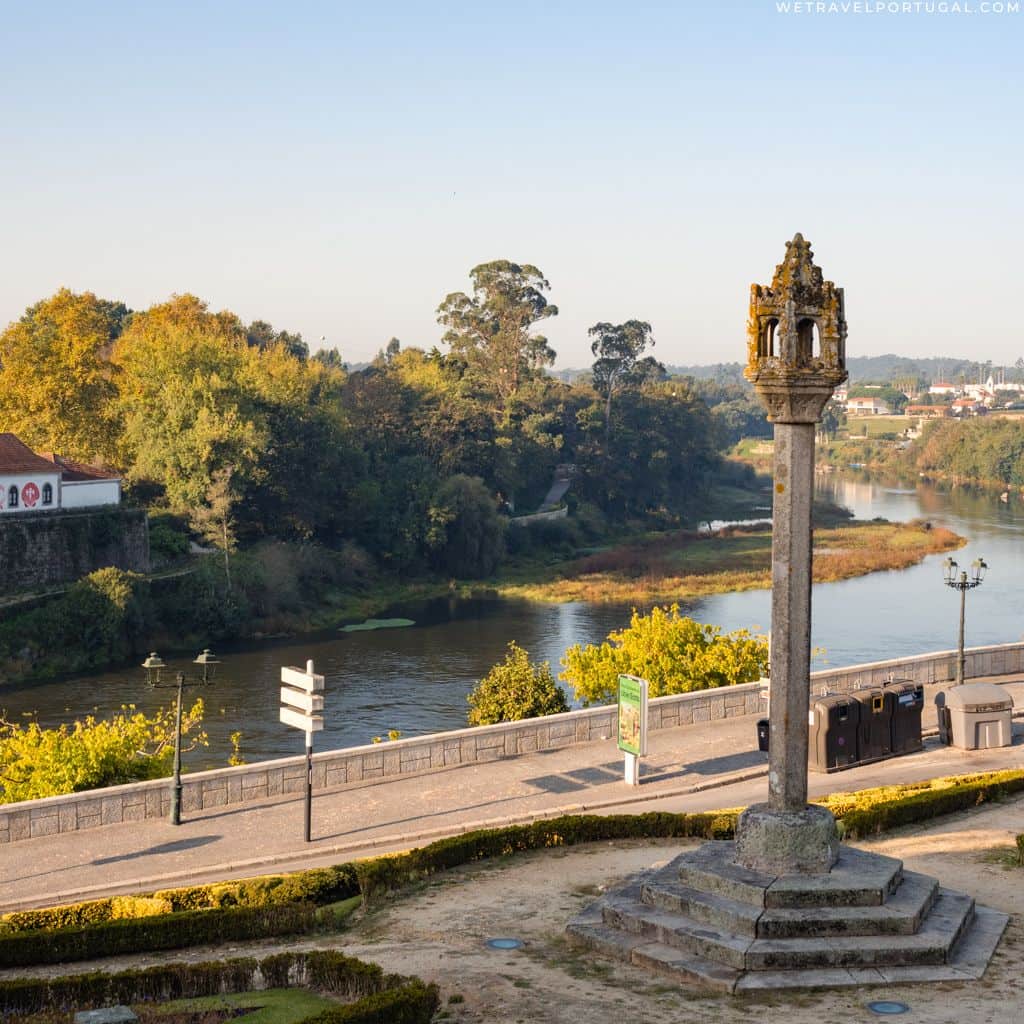
Should you Visit Barcelos?
Mention Barcelos and most people will immediately think of the national symbol of Portugal, but there’s so much more to this lively city than a legend and a ceramic rooster! Despite it being a part of the city’s identity, there’s much more to discover! From Portugal’s medieval history to a thriving arts and craft scene, to the typical food of Northern Portugal, it’s a great place to experience it all!


Hello all,
I’m a retired Canadian and I believe this is my retirement destination. What a wonderful location. Full of history, culture and beauty.